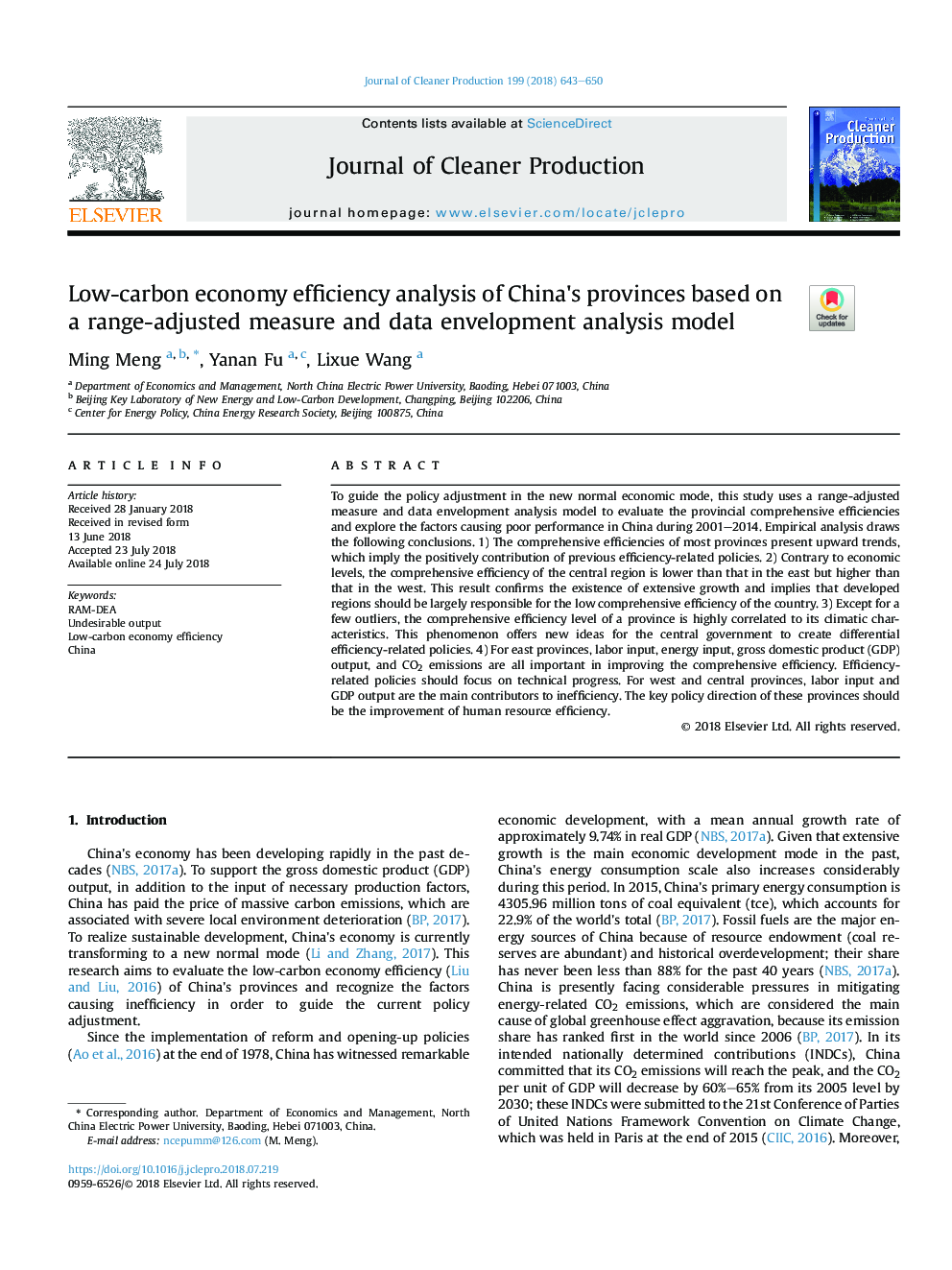| Article ID | Journal | Published Year | Pages | File Type |
|---|---|---|---|---|
| 8093267 | Journal of Cleaner Production | 2018 | 8 Pages |
Abstract
To guide the policy adjustment in the new normal economic mode, this study uses a range-adjusted measure and data envelopment analysis model to evaluate the provincial comprehensive efficiencies and explore the factors causing poor performance in China during 2001-2014. Empirical analysis draws the following conclusions. 1) The comprehensive efficiencies of most provinces present upward trends, which imply the positively contribution of previous efficiency-related policies. 2) Contrary to economic levels, the comprehensive efficiency of the central region is lower than that in the east but higher than that in the west. This result confirms the existence of extensive growth and implies that developed regions should be largely responsible for the low comprehensive efficiency of the country. 3) Except for a few outliers, the comprehensive efficiency level of a province is highly correlated to its climatic characteristics. This phenomenon offers new ideas for the central government to create differential efficiency-related policies. 4) For east provinces, labor input, energy input, gross domestic product (GDP) output, and CO2 emissions are all important in improving the comprehensive efficiency. Efficiency-related policies should focus on technical progress. For west and central provinces, labor input and GDP output are the main contributors to inefficiency. The key policy direction of these provinces should be the improvement of human resource efficiency.
Keywords
Related Topics
Physical Sciences and Engineering
Energy
Renewable Energy, Sustainability and the Environment
Authors
Ming Meng, Yanan Fu, Lixue Wang,
